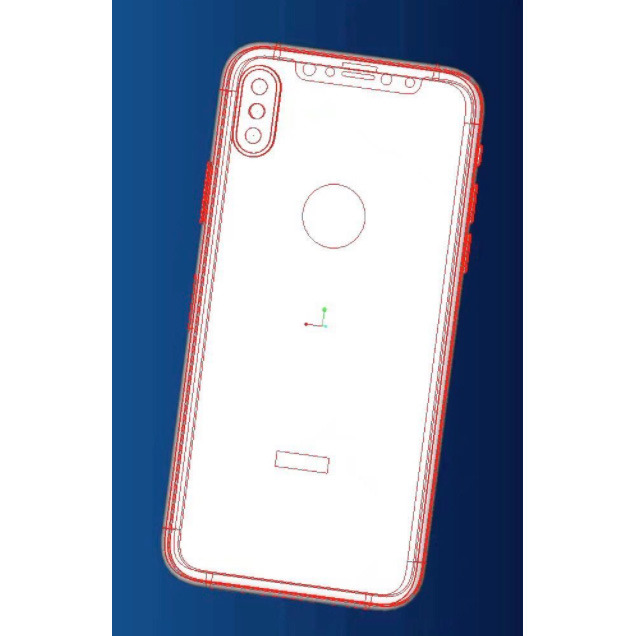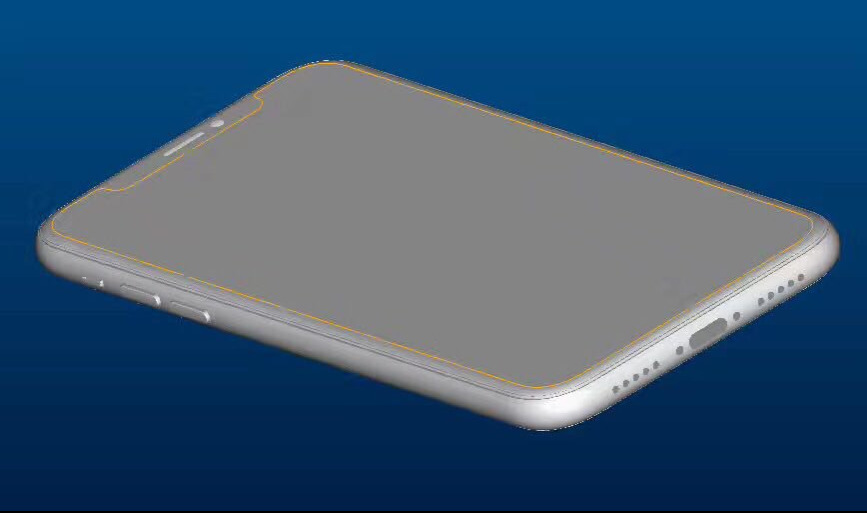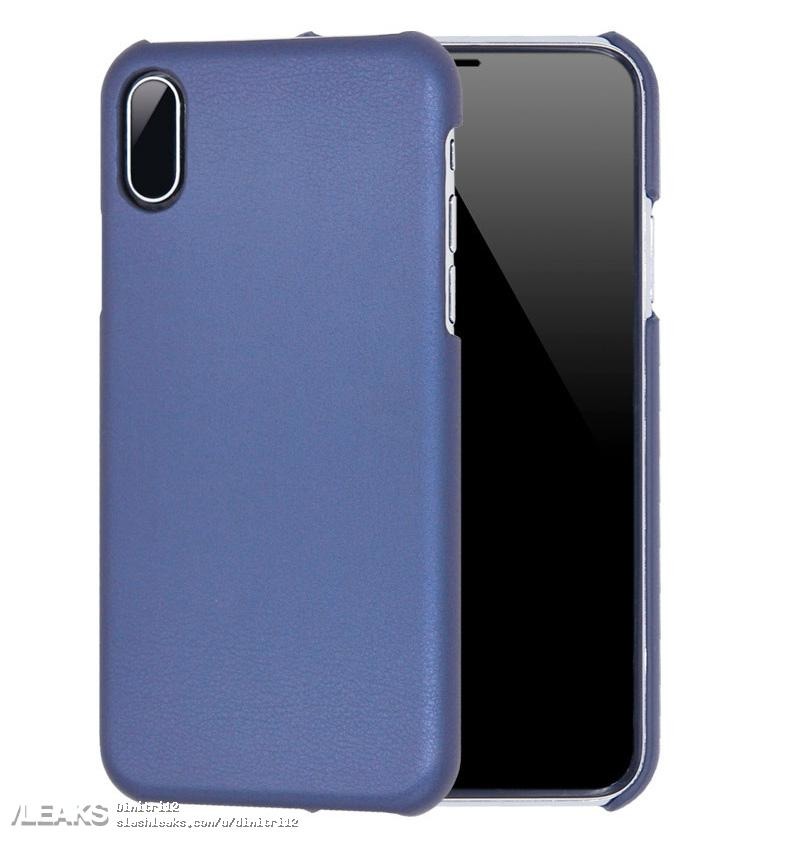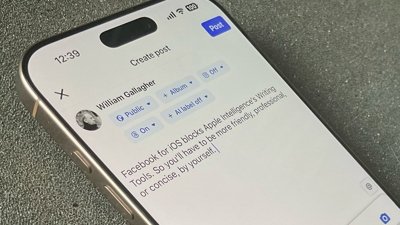A new trio of images suggest that Apple's "iPhone 8" will, as expected, forego any obvious fingerprint sensor, whether on the front or the back.
A pair of CAD renders shared by leaker Benjamin Geskin depict both the front and rear of the phone, the latter sporting a vertical twin-lens camera, and markings for where an Apple logo and "iPhone" text should be. Towards the top are what appear to be the device's front camera, sensors, and earpiece, simply visible through the render.
The front of the phone is allegedly entirely covered by the display, the only exception being a cutout for the aforementioned hardware. Early rumors suggested that Apple would try to embed those parts under the screen as with Touch ID, but that may have proven too difficult.
Separately, a photo posted to Slashleaks on Monday shows what's claimed to be a dummy "iPhone 8" sitting inside a case, similar to Apple's leather case for the iPhone 7. Although it could be a render, the photo appears consistent with both the new CAD renders and a dummy unit seen in a recent video, including a metal ring around the camera.
Apple is believed to have solved the problem of embedding a Touch ID sensor in the phone's edge-to-edge OLED display, enabling a virtual home button and avoiding the need to place a dedicated sensor on the back. That's been suggested in some other leaks, but it could be that Apple developed prototypes along those lines only to reject them.
The "iPhone 8" should be announced at a September press event, though mass production might only begin in October or November. In the meantime the company should have two LCD-based phones — the "iPhone 7s" and "7s Plus" — which will continue to use physical home buttons with integrated Touch ID.
 Roger Fingas
Roger Fingas




 William Gallagher
William Gallagher

 Andrew O'Hara
Andrew O'Hara
 Wesley Hilliard
Wesley Hilliard

 Malcolm Owen
Malcolm Owen
 Marko Zivkovic
Marko Zivkovic




-m.jpg)




9 Comments
If the display is that shape I'm assuming those extra wings up top are only used to display temporary information and will usually be black (and off). This shape if true would also point toward Apple not yet having the technical means to put the camera under the display, despite those patents from a few years back. IMO you should not be able to patent something you cannot technically implement.
Why would you expect under the screen Touch ID to show up on CAD drawings of the phone's exterior?
I'm going to guess that the elongated power button will double as the home button or fingerprint sensor. I mean why make it so much bigger?